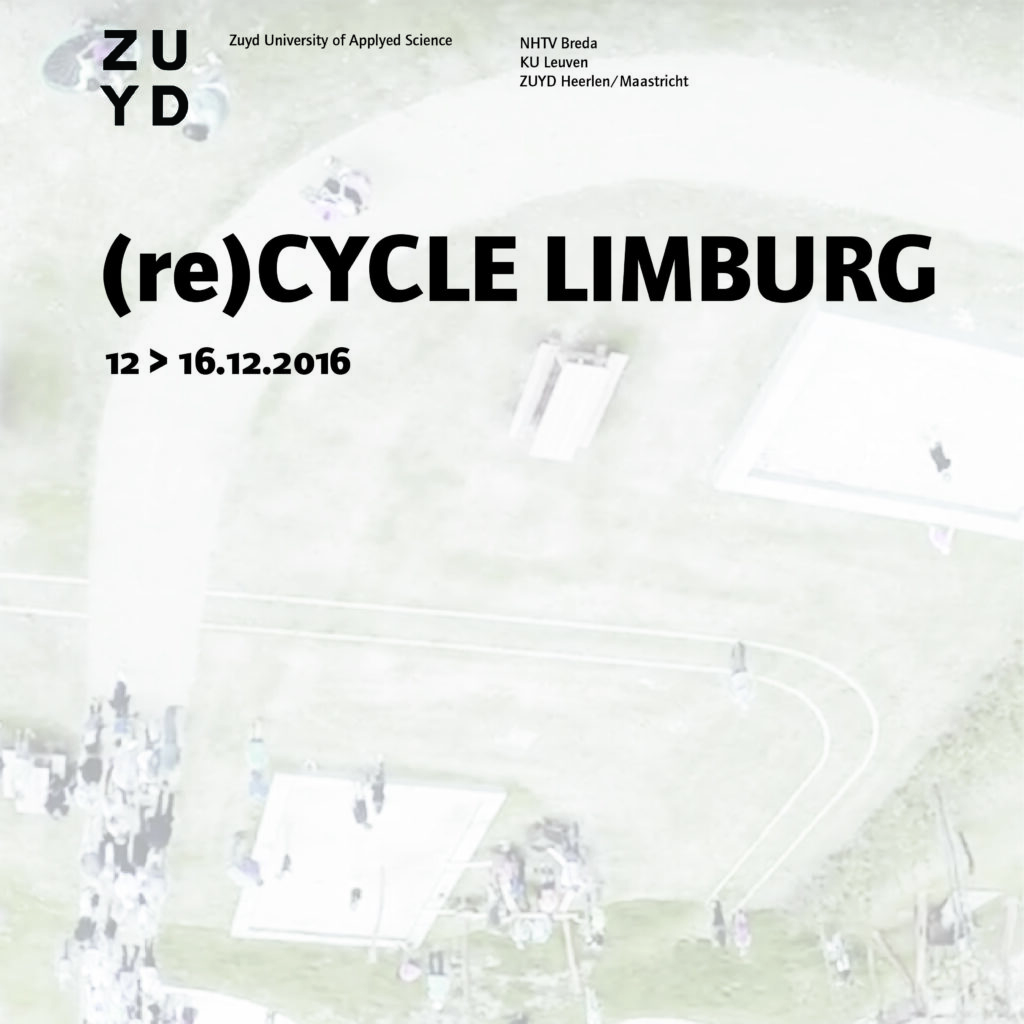(re)CYCLE Limburg booklet

This booklet holds a collection of drawings, maps, schemes, collages, artistic impressions etc. which were made by students during an intense design moment in the project (re)CYCLE Limburg, which took place in December 2016. Students of Built Environment, Facility Management, Social Work and Health & Care cooperated in making designs and developing strategies for urban […]
Quenching Mo Optical Losses in CIGS Solar Cells by a Point Contacted Dual-layer Dielectric Spacer: a 3-D Optical Study
A 3-D optical modelling was calibrated to calculate the light absorption and the total reflection of fabricated CIGS solar cells. Absorption losses at molybdenum (Mo) / CIGS interface were explained in terms of plasmonic waves. To quench these losses, we assumed the insertion of a lossless dielectric spacer between Mo and CIGS, whose optical properties […]
Advanced Light Management Techniques for Two-terminal Hybrid Tandem Solar Cells
Multi-junction solar cells are considered for various applications, as they tackle various loss mechanisms for single junction solar cells. These losses include thermalization and non-absorption below the band gap. In this work, a tandem configuration comprising copper-indium-gallium-di-selenide (CIGS) and hydrogenated amorphous silicon (a-Si:H) absorber layers is studied. Two main challenges are addressed in this work. […]
Are Energy Decisions About Energy?
Research shows that buildings should use 80% less energy in 2050 to counter climate change and to reduce dependence on fossil fuels [1, 2]. To achieve this in the Netherlands, 75% of the Dutch houses should be renovated [3] with a pace of 300,000 houses each year [2]. This can be achieved by one-off energy […]
Comparative Performance Assessment of a Non-ventilated and Ventilated BIPV Rooftop Configurations in the Netherlands Solar Energy
Backside ventilation is one of the most common passive cooling methods of PV modules in the built environment, but might be under constraint when integrating PV in the building envelope. To investigate the short and long term effect of backside ventilation on Building Integrated PV (BIPV) performance and lifespan, a comparative BIPV field test is […]
(re)CYCLE Limburg, A Co-design Approach for Transforming Public Spaces in Kerkrade West
In a moment of socio-economical and urban transition processes taking place in Europe, an increasing number of cities and territories are today facing population decline and its consequences. Population decline is indeed associated to widespread issues: unemployment, declining of property values, fragmentation of the urban environment, lack of participation in the city and neighbourhood life. […]
Environmental Impact Evaluation of Energy Saving and Energy Generation: Case Study for Two Dutch Dwelling Types Building and Environment
The existing building stock is a logical target to improve the level of sustainability of the built environment by energy saving measures. These measures typically entail a decrease of operational energy demand, mainly by adding building components such as insulation packages and energy generating devices. Consequently, material related environmental impact might create a collateral disproportionate […]
Influence of the Atmospheric Species Water, Oxygen, Nitrogen and Carbon Dioxide on the Degradation of Aluminum Doped Zinc Oxide Layers.
Aluminum doped zinc oxide (ZnO:Al) layers were exposed to the atmospheric gases carbon dioxide (CO2), oxygen (O2), nitrogen (N2) and air as well as liquid H2O purged with these gases, in order to investigate the chemical degradation behavior of these layers. The samples were analyzed by electrical, compositional and optical measurements before, during and after […]
